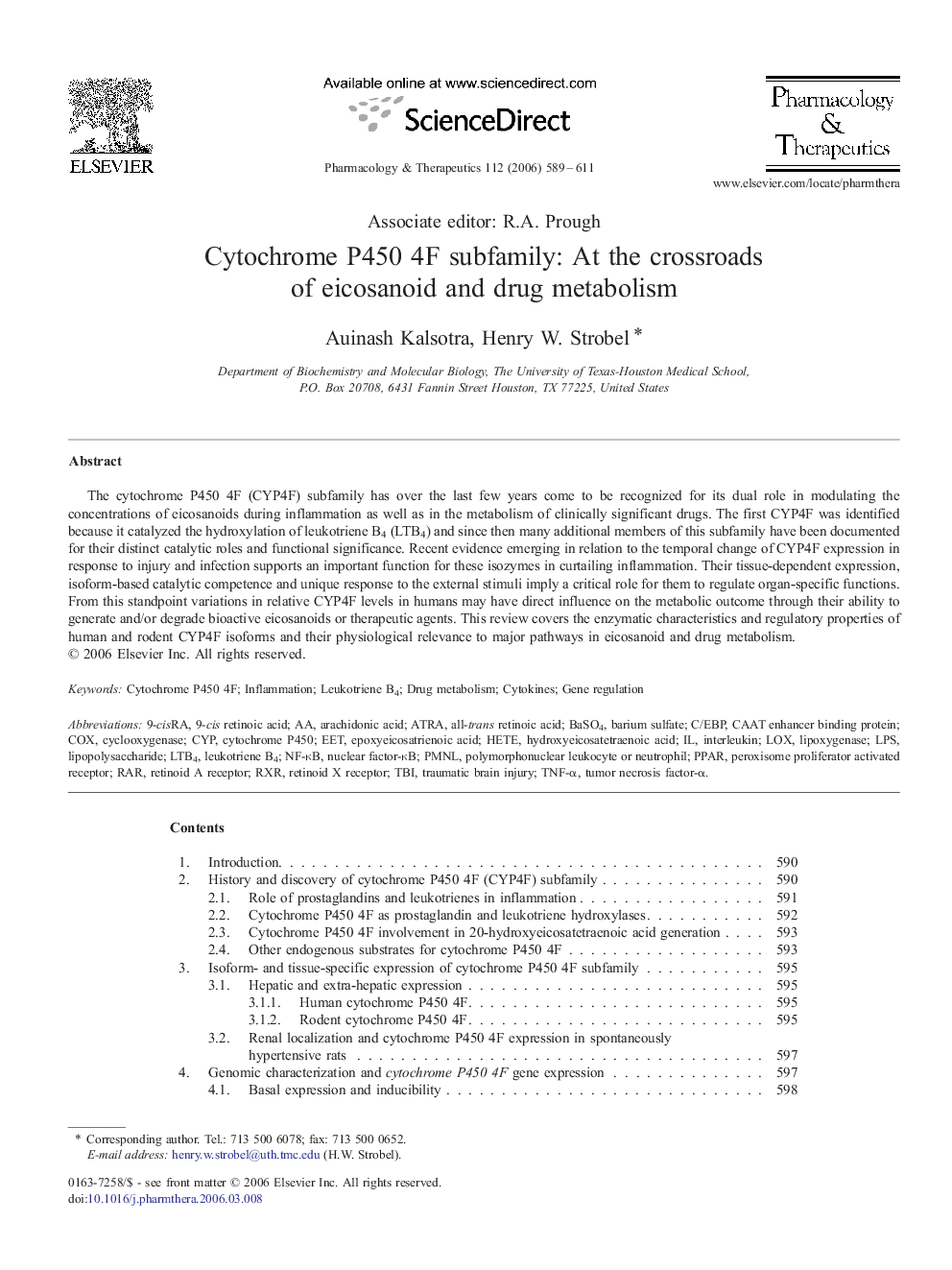| Article ID | Journal | Published Year | Pages | File Type |
|---|---|---|---|---|
| 2564028 | Pharmacology & Therapeutics | 2006 | 23 Pages |
The cytochrome P450 4F (CYP4F) subfamily has over the last few years come to be recognized for its dual role in modulating the concentrations of eicosanoids during inflammation as well as in the metabolism of clinically significant drugs. The first CYP4F was identified because it catalyzed the hydroxylation of leukotriene B4 (LTB4) and since then many additional members of this subfamily have been documented for their distinct catalytic roles and functional significance. Recent evidence emerging in relation to the temporal change of CYP4F expression in response to injury and infection supports an important function for these isozymes in curtailing inflammation. Their tissue-dependent expression, isoform-based catalytic competence and unique response to the external stimuli imply a critical role for them to regulate organ-specific functions. From this standpoint variations in relative CYP4F levels in humans may have direct influence on the metabolic outcome through their ability to generate and/or degrade bioactive eicosanoids or therapeutic agents. This review covers the enzymatic characteristics and regulatory properties of human and rodent CYP4F isoforms and their physiological relevance to major pathways in eicosanoid and drug metabolism.
